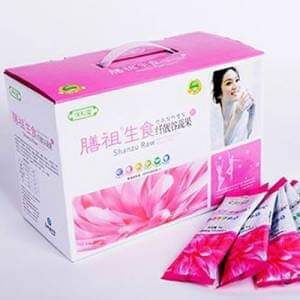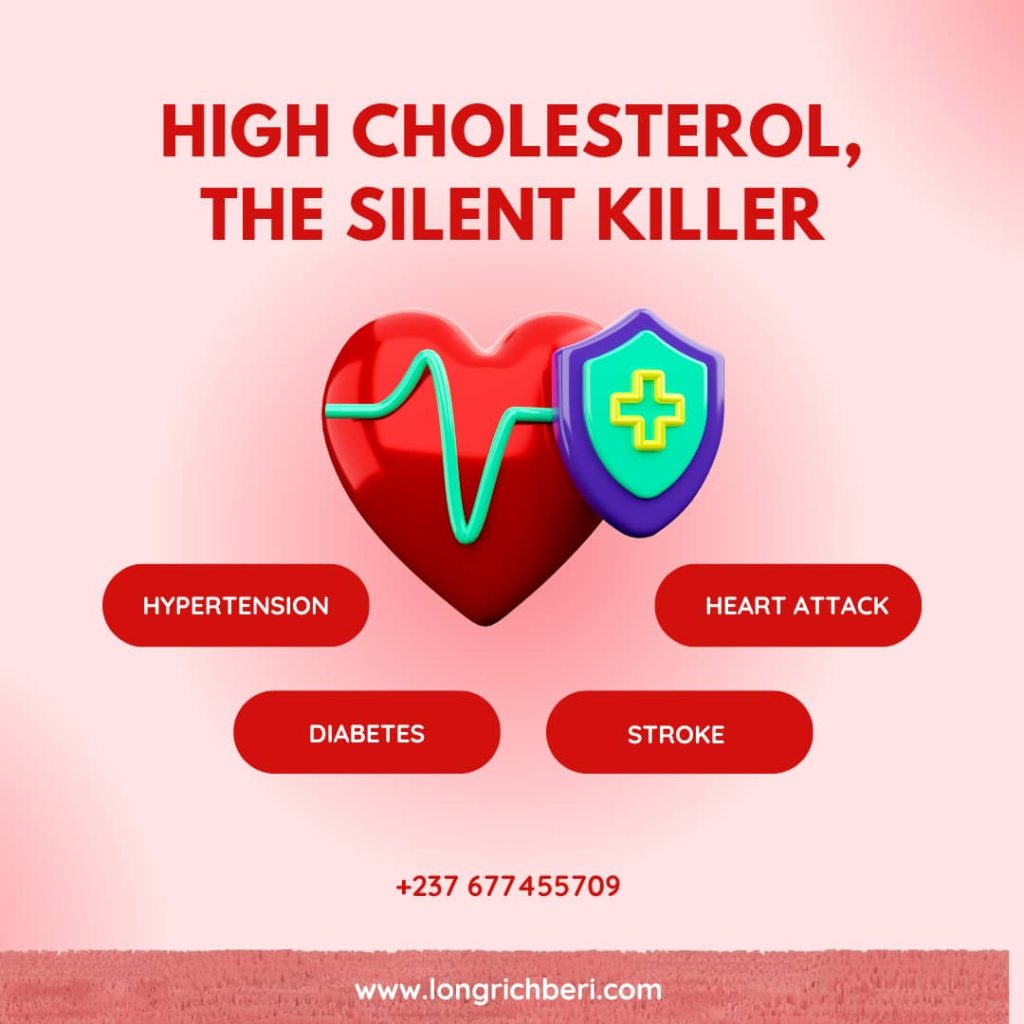Understanding High Cholesterol, the silent killer;
Cholesterol is a waxy substance. It’s not inherently “bad.” Your body needs it to build cells and make vitamins (like Vitamin D) and other hormones (cortisone or hydrocortisone, Aldosterone, testosterone, and progesterone). But too much cholesterol can pose a problem.
Sources of cholesterol
Cholesterol comes from two sources. Your liver makes all the cholesterol you need. The remainder of the cholesterol in your body comes from foods from animals. For example, meat, poultry and dairy products all contain dietary cholesterol.
Those same foods are high in saturated and trans fats. These fats cause your liver to make more cholesterol than it otherwise would. For some people, this added production means they go from a normal cholesterol level to one that’s unhealthy.
Some tropical oils – such as palm oil, palm kernel oil and coconut oil – contain saturated fat that can increase bad cholesterol. These oils are often found in baked goods
Why cholesterol matters
Cholesterol circulates in the blood. As the amount of cholesterol in your blood increases, so does the risk to your health. High cholesterol contributes to a higher risk of cardiovascular diseases, such as heart disease and stroke (the American Heart Association states 75% of heart attack and stroke survivors reported having high cholesterol). That’s why it’s important to have your cholesterol tested, so you can know your levels.
Cholesterol travels through the blood on proteins called “lipoproteins.” The two types of cholesterol are: Low-density lipoprotein (LDL) cholesterol, which is bad, and High-density lipoprotein (HDL) Cholesterol, which is good. Too much of the bad kind, or not enough of the good kind, increases the risk that cholesterol will slowly build up in the inner walls of the arteries that feed the heart and brain.
HDL (good) cholesterol
This cholesterol can be thought of as the “good” cholesterol because a healthy level may protect against heart attack and stroke.
HDL carries LDL (bad) cholesterol away from the arteries and back to the liver, where the LDL is broken down and passed from the body. But HDL cholesterol doesn’t completely eliminate LDL cholesterol. Only one-third to one-fourth of blood cholesterol is carried by HDL.
Cholesterol can join with other substances to form a thick, hard deposit on the inside of the arteries. This can narrow the arteries and make them less flexible – a condition known as atherosclerosis. If a blood clot forms and blocks one of these narrowed arteries, a heart attack or stroke can result.
Normal Ranges of Cholesterol
Here are the ranges for total cholesterol in adults:
- Normal: Less than 200 mg/dL
- Borderline high: 200 to 239 mg/dL
- High: At or above 240 mg/dL
These are the adult ranges for LDL cholesterol:
- Optimal: Less than 100 mg/dL (This is the goal for people with diabetes or heart disease.)
- Near optimal: 100 to 129 mg/dL
- Borderline high: 130 to 159 mg/dL
- High: 160 to 189 mg/dL
- Very high: 190 mg/dL and higher
Here is the adult range for HDL cholesterol:
Normal: 35 to 65 mg/dL for men, 35 to 80 mg/dL for women.
The above numbers are general guidelines, because actual goals depend on the number of risk factors you have for heart disease.
Your HDL cholesterol levels should be above 40 mg/dL. This type of fat is actually good for you because it lowers your risk of heart disease. The higher the number, the lower your risk. 60mg/dL or above is considered the level to protect you against heart disease.
Medical conditions that can cause unhealthy cholesterol levels include:
- Chronic kidney disease
- Diabetes
- HIV/AIDS
- Hypothyroidism
- Lupus
Signs and symptoms of High Cholesterol
There are usually no symptoms of high cholesterol. But if left untreated, it can lead to heart attack and stroke. It’s often a hidden risk factor which means it can happen without us knowing until it’s too late. That is why it’s so important to get your cholesterol level checked.
Risk factors
Factors that can increase your risk O
f unhealthy cholesterol levels include:
- Poor diet. Eating too much saturated fat or trans fats can result in unhealthy cholesterol levels. Saturated fats are found in fatty cuts of meat and full-fat dairy products. Trans fats are often found in packaged snacks or desserts.
- Having a body mass index (BMI) of 30 or greater puts you at risk of high cholesterol.
- Lack of exercise. Exercise helps boost your body’s HDL, the “good,” cholesterol.
- Cigarette smoking may lower your level of HDL, the “good,” cholesterol.
- Drinking too much alcohol can increase your total cholesterol level.
- Even young children can have unhealthy cholesterol, but it’s much more common in people over 40. As you age, your liver becomes less able to remove LDL cholesterol.
Complications of High Cholesterol
- Narrowing of the arteries (atherosclerosis)
- Heart attack.
- Stroke.
- Kidney failure
- Hypertension
- Transient ischemic attack (TIA) – often known as a “mini stroke”
- Peripheral arterial disease (PAD)
The worst foods for high cholesterol, given their high saturated fat content, include:
- Red meat, like beef, pork, and lamb, as well as processed meats like sausage.
- Full-fat dairy, like cream, whole milk, and butter.
- Baked goods and sweets.
- Fried foods.
- Tropical oils such as palm oil and coconut oil.
- Butter.
Longrich Supplements against High Cholesterol
-
9 points on how the Classy style alkaline cup burns down bad cholesterol


Ionization: Longrich Alkaline Cup is said to ionize water, which can enhance its antioxidant properties. Antioxidants may play a role in reducing cholesterol oxidation.
Hydration: Proper hydration is essential for overall health, and drinking enough water may indirectly support healthy cholesterol levels.
Detoxification: Advocates claim that the cup’s alkaline water can aid in detoxifying the body, potentially removing excess cholesterol.
Neutralizing Free Radicals: Antioxidants in alkaline water may neutralize free radicals, which can contribute to high cholesterol levels.
Blood Circulation: Improved hydration and potential detoxification can support better blood circulation, which may impact cholesterol levels positively.
Lipid Metabolism: Some proponents suggest that alkaline water may help regulate lipid metabolism, potentially reducing the production of LDL cholesterol.
Dietary Support: Using the cup may encourage individuals to drink more water, which can complement a heart-healthy diet for managing cholesterol.
Stress Reduction: Staying hydrated can help reduce stress on the body, which can have a positive impact on cholesterol levels.
2. How Longrich Brown tea burns bad cholesterol


However, the effectiveness of Longrich brown tea would depend on its specific formulation and the concentration of these bioactive compounds. It’s also important to note that lifestyle factors like diet and exercise play a significant role in managing cholesterol levels. If you’re concerned about your cholesterol levels, it’s a good idea to consult with a healthcare professional who can provide personalized advice and recommend evidence-based strategies for managing cholesterol.
3. How Longrich Nutrivrich Pink tea reduces bad cholesterol


Omega-3 Fatty Acids: These are known to help reduce triglycerides and may have a modest effect on lowering bad cholesterol (LDL) levels.
Plant Sterols: Plant sterols can block the absorption of dietary cholesterol in the intestines, which can lead to lower LDL cholesterol levels.
Antioxidants: Antioxidants can help protect the lining of blood vessels and reduce inflammation, which can be beneficial for heart health.
However, it’s important to remember that individual responses to such products can vary, and their effectiveness may depend on a person’s overall diet and lifestyle. Managing cholesterol levels typically involves a combination of factors, including a healthy diet, regular exercise, and, in some cases, medication prescribed by a healthcare professional.
Conclusion
Understanding high cholesterol the silent killer is crucial for maintaining good health. It is a condition characterized by elevated levels of LDL cholesterol, which can lead to heart disease. Lifestyle changes, such as a healthy diet and regular exercise, can help manage cholesterol levels. Medications may also be necessary. Regular check-ups are essential for prevention and early intervention.

